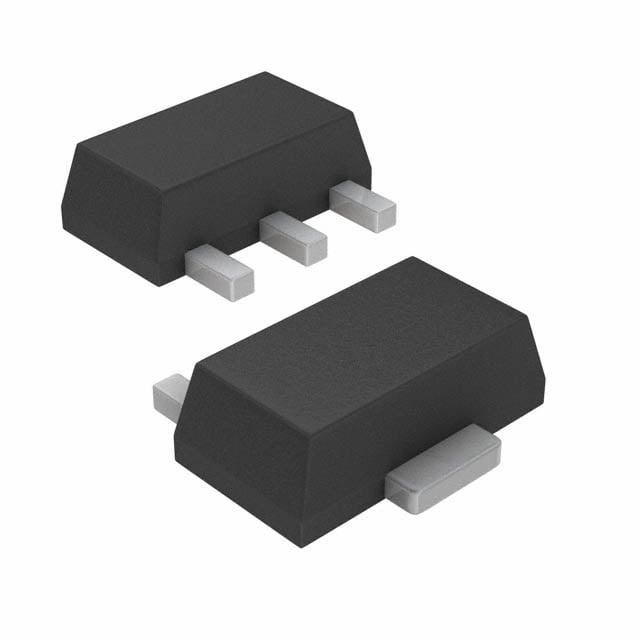ICGOO在线商城 > 射频/IF 和 RFID > RF 放大器 > ADL5321ARKZ-R7
- 型号: ADL5321ARKZ-R7
- 制造商: Analog
- 库位|库存: xxxx|xxxx
- 要求:
| 数量阶梯 | 香港交货 | 国内含税 |
| +xxxx | $xxxx | ¥xxxx |
查看当月历史价格
查看今年历史价格
ADL5321ARKZ-R7产品简介:
ICGOO电子元器件商城为您提供ADL5321ARKZ-R7由Analog设计生产,在icgoo商城现货销售,并且可以通过原厂、代理商等渠道进行代购。 ADL5321ARKZ-R7价格参考。AnalogADL5321ARKZ-R7封装/规格:RF 放大器, RF Amplifier IC Cellular, CDMA, GSM, ISM, PCS, W-CDMA AND WLL 2.3GHz ~ 4GHz SOT-89-3。您可以下载ADL5321ARKZ-R7参考资料、Datasheet数据手册功能说明书,资料中有ADL5321ARKZ-R7 详细功能的应用电路图电压和使用方法及教程。
| 参数 | 数值 |
| 产品目录 | |
| 描述 | IC AMP DRIVER RF 2.3/4GHZ SOT89 |
| 产品分类 | |
| 品牌 | Analog Devices Inc |
| 数据手册 | |
| 产品图片 |
|
| P1dB | 25.7dBm(371.5mW) |
| 产品型号 | ADL5321ARKZ-R7 |
| RF类型 | 手机,CDMA,GSM,ISM,PCS,W-CDMA和WLL |
| rohs | 无铅 / 符合限制有害物质指令(RoHS)规范要求 |
| 产品系列 | - |
| 产品培训模块 | http://www.digikey.cn/PTM/IndividualPTM.page?site=cn&lang=zhs&ptm=24737 |
| 产品目录页面 | |
| 供应商器件封装 | SOT-89-3 |
| 其它名称 | ADL5321ARKZ-R7DKR |
| 包装 | Digi-Reel® |
| 噪声系数 | 4dB |
| 增益 | 13.2dB ~ 14.6dB |
| 封装/外壳 | TO-243AA |
| 标准包装 | 1 |
| 测试频率 | 2.6GHz |
| 特色产品 | http://www.digikey.com/cn/zh/ph/analog-devices/rf.html |
| 电压-电源 | 4.5 V ~ 5.5 V |
| 电流-电源 | 90mA ~ 100mA |
| 视频文件 | http://www.digikey.cn/classic/video.aspx?PlayerID=1364138032001&width=640&height=505&videoID=2245193150001 |
| 频率 | 2.3GHz ~ 4GHz |

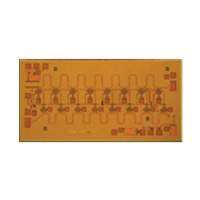
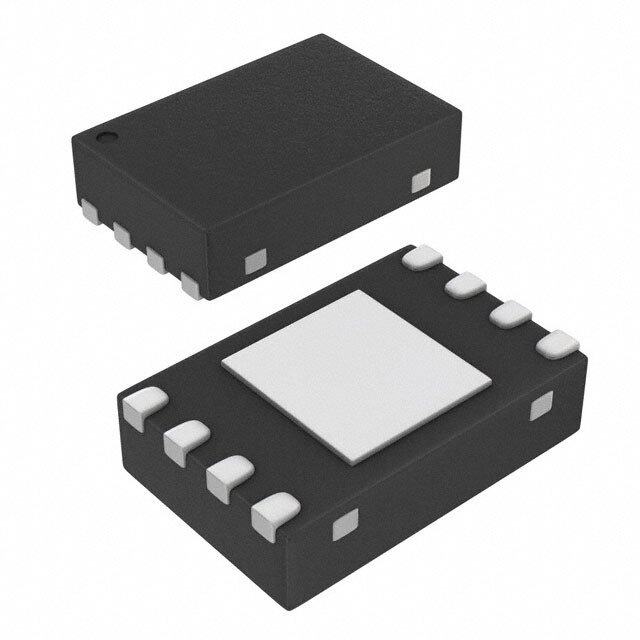

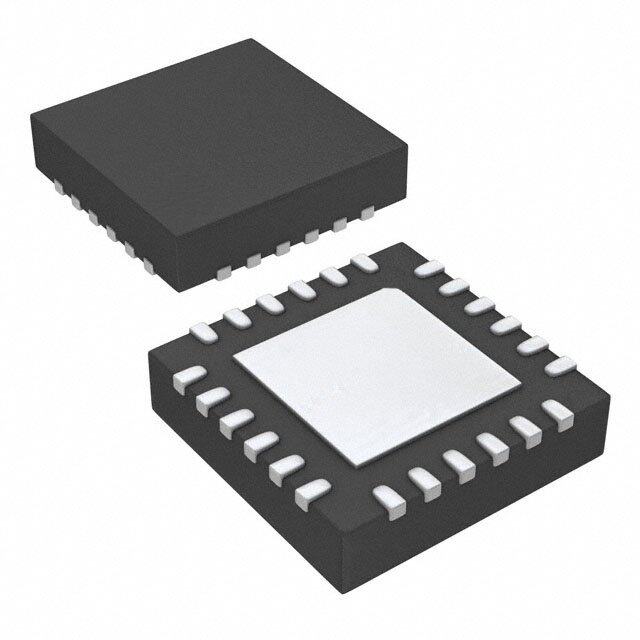
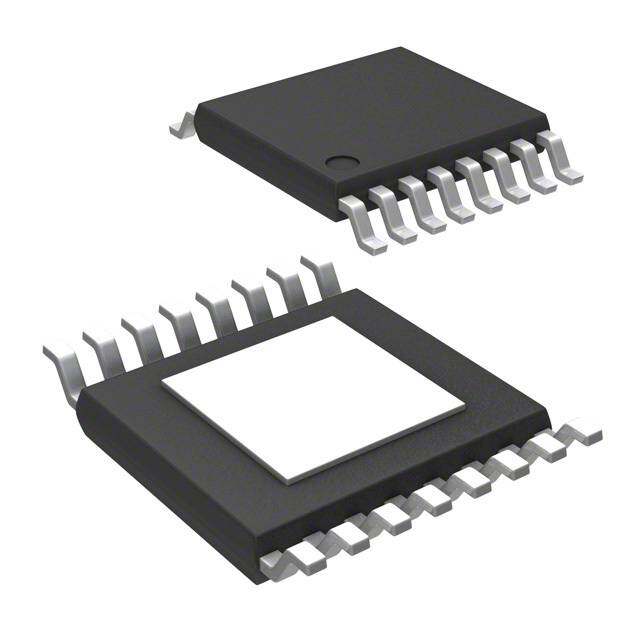
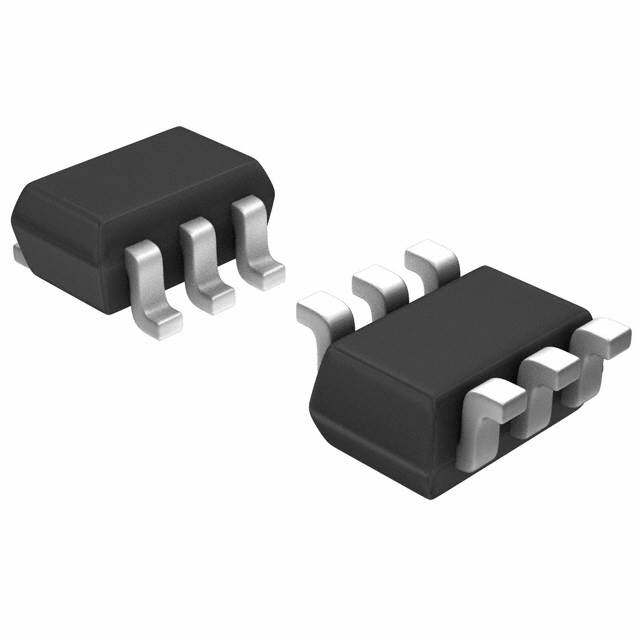
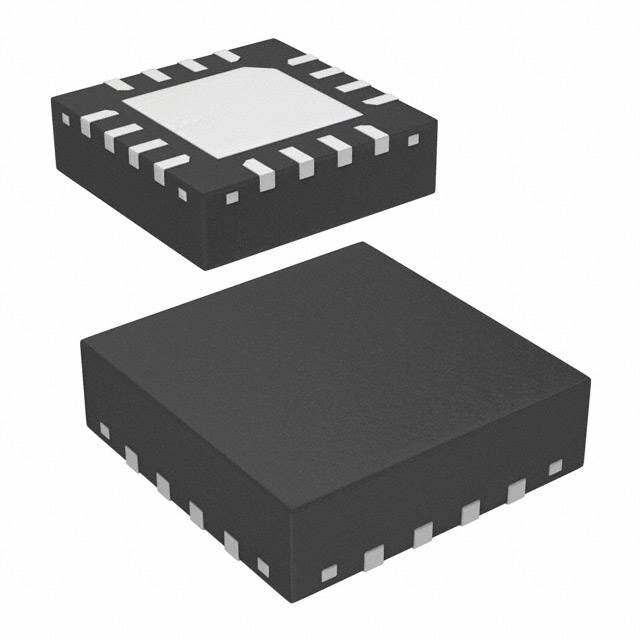


- 商务部:美国ITC正式对集成电路等产品启动337调查
- 曝三星4nm工艺存在良率问题 高通将骁龙8 Gen1或转产台积电
- 太阳诱电将投资9.5亿元在常州建新厂生产MLCC 预计2023年完工
- 英特尔发布欧洲新工厂建设计划 深化IDM 2.0 战略
- 台积电先进制程称霸业界 有大客户加持明年业绩稳了
- 达到5530亿美元!SIA预计今年全球半导体销售额将创下新高
- 英特尔拟将自动驾驶子公司Mobileye上市 估值或超500亿美元
- 三星加码芯片和SET,合并消费电子和移动部门,撤换高东真等 CEO
- 三星电子宣布重大人事变动 还合并消费电子和移动部门
- 海关总署:前11个月进口集成电路产品价值2.52万亿元 增长14.8%
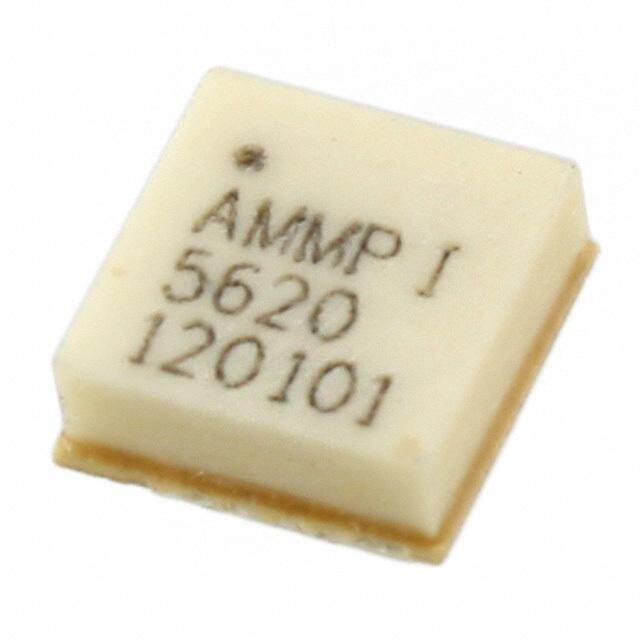

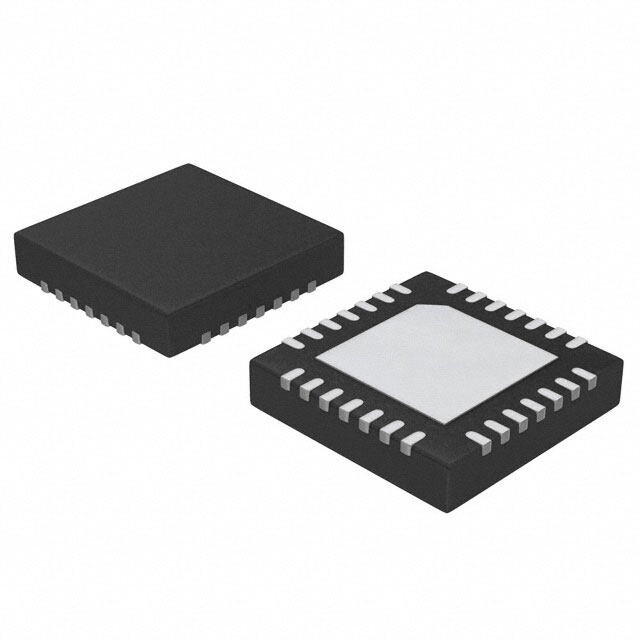

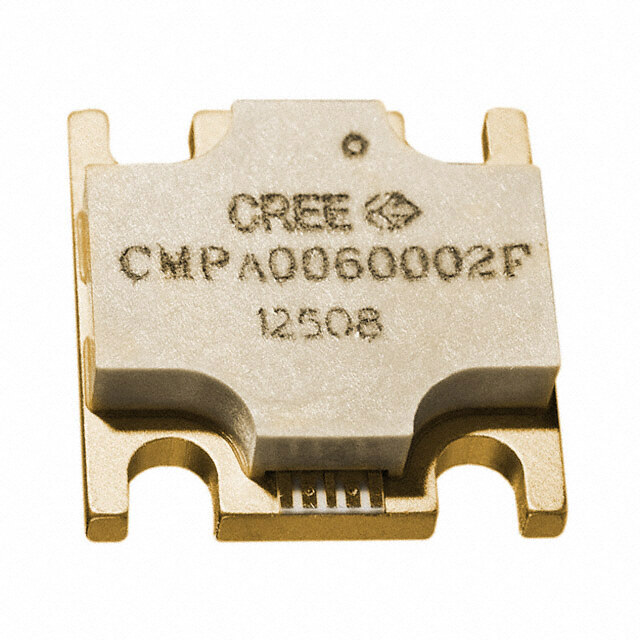

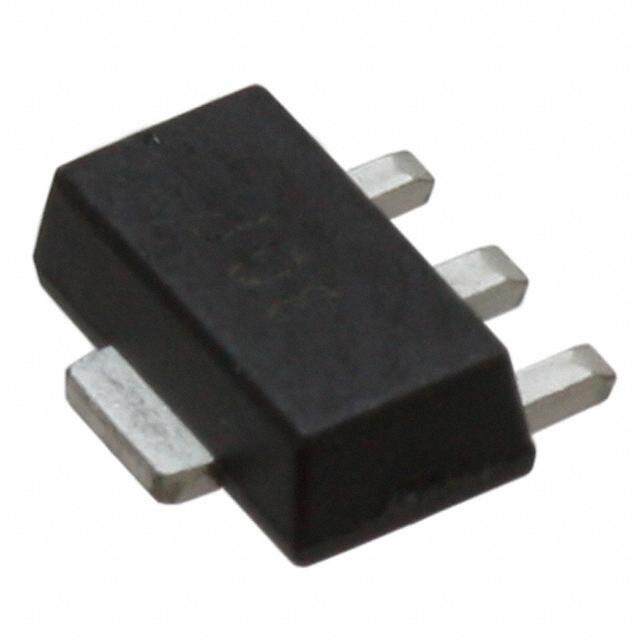

PDF Datasheet 数据手册内容提取
2.3 GHz to 4.0 GHz ¼ Watt RF Driver Amplifier Data Sheet ADL5321 FEATURES FUNCTIONAL BLOCK DIAGRAM Operation: 2.3 GHz to 4.0 GHz GND Gain of 14.0 dB at 2.6 GHz (2) OIP3 of 41.0 dBm at 2.6 GHz ADL5321 P1dB of 25.7 dBm at 2.6 GHz Noise figure: 4.0 dB at 2.6 GHz Power supply voltage: 3.3 V to 5 V BIAS PDNooywn baeimar ssi ucreapslpliysly tao cdruj rurersqetanubtir:l ee3d 7b imasA to 90 mA RF1IN GN2D RFO3UT07307-001 Figure 1. Thermally efficient, MSL-1 rated SOT-89 package Operating temperature range: −40°C to +105°C ESD rating of ±2 kV (Class 3A) APPLICATIONS Wireless infrastructure Automated test equipment ISM/AMR applications GENERAL DESCRIPTION The ADL5321 incorporates a dynamically adjustable biasing The ADL5321 also delivers excellent adjacent channel leakage circuit that allows for the customization of OIP3 and P1dB ratio (ACLR) vs. P . For output powers up to 10 dBm rms, the OUT performance from 3.3 V to 5 V without the need for an external ADL5321 adds very little distortion to the output spectrum. At bias resistor. This feature gives the designer the ability to tailor 2.6 GHz, the ACLR is −59 dB and a relative constellation error of driver amplifier performance to the specific needs of the design. −46.6 dB (<0.5% EVM) at an output power of 10 dBm rms. This feature also creates the opportunity for dynamic biasing of –30 the driver amplifier, where a variable supply is used to allow for ADJCH LOW2.6GHZ full 5 V biasing under large signal conditions and then can –40 ALTCHLOW2.6GHZ ADJCH LOW3.5GHZ reduce the supply voltage when signal levels are smaller and ALTCHUP3.5GHZ lower power consumption is desirable. This scalability reduces –50 the need to evaluate and inventory multiple driver amplifiers B) d for different output power requirements from 22 dBm to R ( –60 L 26 dBm output power levels. C A –70 The ADL5321 is also rated to operate across the wide temper- ature range of −40°C to +105°C for reliable performance in –80 designs that experience higher temperatures, such as power a4m.0 pGliHfiezr ws.i dTeh efr ¼eq uweanttc yd rriavnegr ea manpdl iofinerly c roevqeurisr tehse a 2 f.e3w G eHxtze rton al –90–10 –5 0 POUT 5(dBm) 10 15 20 07307-125 components to be tuned to a specific band within that wide Figure 2. WiMAX 64 QAM, 10 MHz Bandwidth, Single Carrier range. This high performance, broadband RF driver amplifier is well suited for a variety of wired and wireless applications including cellular infrastructure, ISM band power amplifiers, defense equipment, and instrumentation equipment. A fully populated evaluation board is available. Rev. D Document Feedback Information furnished by Analog Devices is believed to be accurate and reliable. However, no responsibility is assumed by Analog Devices for its use, nor for any infringements of patents or other One Technology Way, P.O. Box 9106, Norwood, MA 02062-9106, U.S.A. rights of third parties that may result from its use. Specifications subject to change without notice. No license is granted by implication or otherwise under any patent or patent rights of Analog Devices. Tel: 781.329.4700 ©2008–2014 Analog Devices, Inc. All rights reserved. Trademarks and registered trademarks are the property of their respective owners. Technical Support www.analog.com
ADL5321 Data Sheet TABLE OF CONTENTS Features .............................................................................................. 1 Typical Performance Characteristics ..............................................7 Applications ....................................................................................... 1 High Temperature and 3.3 V Operation ..................................... 10 Functional Block Diagram .............................................................. 1 Basic Layout Connections ............................................................. 11 General Description ......................................................................... 1 Soldering Information and Recommended PCB Land Revision History ............................................................................... 2 Pattern .......................................................................................... 11 Specifications ..................................................................................... 3 Matching Procedure ................................................................... 12 Typical Scattering Parameters ..................................................... 4 WiMAX Operation .................................................................... 13 Absolute Maximum Ratings ............................................................ 5 Evaluation Board ............................................................................ 14 Thermal Resistance ...................................................................... 5 Outline Dimensions ....................................................................... 16 ESD Caution .................................................................................. 5 Ordering Guide .......................................................................... 16 Pin Configuration and Function Descriptions ............................. 6 REVISION HISTORY 3/14—Rev. C to Rev. D Changes to Figure 29 ...................................................................... 11 Updated Outline Dimensions ....................................................... 16 7/12—Rev. B to Rev. C Change to Title .................................................................................. 1 Changes to Table 1 ............................................................................ 3 Replaced Table 2 ............................................................................... 4 Changes to Table 3 and Table 4 ............................................................... 5 Added Figure 20; Renumbered Sequentially ........................................ 9 Moved High Temperature and 3.3 V Operation Section and added Figure 30 to Figure 32 ............................................................................. 10 Changes to Soldering Information and Recommended PCB Land Pattern Section and changes to Figure 22 ................................. 11 6/10—Rev. A to Rev. B Changes to General Description Section ...................................... 1 Changes to Operating Temperature Range, Table 3 .................... 4 Added High Temperature Operation Section, Figure 27, Figure 28, and Figure 29 ................................................................................... 13 Changes to Ordering Guide .......................................................... 16 2/09—Rev. 0 to Rev. A Updated Outline Dimensions ....................................................... 15 Changes to Ordering Guide .......................................................... 15 5/08—Revision 0: Initial Version Rev. D | Page 2 of 16
Data Sheet ADL5321 SPECIFICATIONS T = 25°C, unless otherwise noted. A Table 1. 3.3 V 5 V Parameter Conditions Min Typ Max Min Typ Max Unit OVERALL FUNCTION Frequency Range 2.3 4.0 2.3 4.0 GHz FREQUENCY = 2.6 GHz Gain1 12.6 13.2 14.0 14.6 dB vs. Frequency ±100 MHz ±0.3 ±0.4 dB vs. Temperature −40°C ≤ T ≤ +85°C ±0.6 ±0.7 dB A vs. Supply 3.2 V to 3.4 V, 4.75 V to 5.25 V ±0.16 ±0.07 dB Output 1 dB Compression Point, P1dB 22.0 25.7 dBm Output Third-Order Intercept, OIP3 Δf = 1 MHz, P = 5 dBm per tone 31 41 dBm OUT Noise Figure 3.5 4.0 dB FREQUENCY = 3.5 GHz Gain1 10.4 11.1 12.0 12.9 dB vs. Frequency ±100 MHz ±0.17 ±0.05 dB vs. Temperature −40°C ≤ T ≤ +85°C ±0.7 ±0.8 dB A vs. Supply 3.2 V to 3.4 V, 4.75 V to 5.25 V ±0.2 ±0.07 dB Output 1 dB Compression Point, P1dB 24.7 25.7 dBm Output Third-Order Intercept, OIP3 Δf = 1 MHz, P = 5 dBm per tone 27 38 dBm OUT Noise Figure 4.3 4.9 dB POWER INTERFACE Pin RFOUT Supply Voltage 3.3 4.5 5 5.5 V Supply Current 37 90 100 mA vs. Temperature −40°C ≤ T ≤ +85°C ±4.0 ±6.0 mA A Power Dissipation VCC = 3.3 V, VCC = 5 V 122 520 mW 1 Guaranteed maximum and minimum specified limits on this parameter are based on six sigma calculations. Rev. D | Page 3 of 16
ADL5321 Data Sheet TYPICAL SCATTERING PARAMETERS VCC = 5 V and T = 25°C; the effects of the test fixture have been de-embedded up to the pins of the device. A Table 2. Frequency S11 S21 S12 S22 (MHz) Magnitude (dB) Angle (°) Magnitude (dB) Angle (°) Magnitude (dB) Angle (°) Magnitude (dB) Angle (°) 2400 −4.54 129.60 11.90 21.92 −26.72 −33.83 −8.18 −166.39 2450 −4.65 126.65 11.89 18.30 -26.63 −36.64 −8.27 −169.02 2500 −4.79 123.62 11.88 14.57 -26.55 −39.62 −8.37 −171.83 2550 −4.92 120.44 11.87 10.68 −26.48 −42.70 −8.45 −175.32 2600 −5.04 117.31 11.85 6.80 −26.42 −45.95 −8.44 −179.11 2650 −5.17 114.43 11.83 2.90 −26.37 −49.25 −8.39 177.31 2700 −5.33 111.78 11.80 −1.06 −26.34 −52.65 −8.33 173.43 2750 −5.50 109.21 11.77 −5.17 −26.31 −56.16 −8.15 169.22 2800 −5.70 106.84 11.74 −9.36 −26.30 −59.84 −7.90 165.46 2850 −5.94 104.85 11.71 −13.64 −26.30 −63.64 −7.63 161.87 2900 −6.25 103.23 11.66 −18.05 −26.31 −67.63 −7.31 158.01 2950 −6.61 101.91 11.62 −22.58 −26.34 −71.77 −6.88 154.58 3000 −7.03 101.06 11.56 −27.18 −26.37 −76.13 −6.44 151.64 3050 −7.53 100.92 11.50 −31.98 −26.44 −80.76 −6.00 148.53 3100 −8.12 101.82 11.40 −36.95 −26.55 −85.61 −5.53 145.65 3150 −8.78 104.04 11.29 −42.09 −26.68 −90.69 −5.03 143.14 3200 −9.47 107.91 11.15 −47.34 −26.85 −95.96 −4.56 140.74 3250 −10.07 113.72 10.97 −52.74 −27.06 −101.50 −4.08 138.36 3300 −10.45 121.55 10.76 −58.29 −27.32 −107.30 −3.61 136.16 3350 −10.45 130.87 10.49 −63.95 −27.65 −113.32 −3.19 133.97 3400 −10.02 140.04 10.17 −69.56 −28.05 −119.45 −2.80 131.77 3450 −9.25 147.61 9.80 −75.16 −28.49 −125.70 −2.43 129.85 3500 −8.28 153.06 9.39 −80.70 −29.00 −132.04 −2.13 128.08 3550 −7.27 156.76 8.92 −86.04 −29.58 −138.45 −1.89 126.22 3600 −6.34 159.01 8.39 −91.20 −30.20 −144.79 −1.66 124.51 3650 −5.51 160.11 7.83 −96.07 −30.88 −151.12 −1.48 123.23 3700 −4.78 160.43 7.26 −100.64 −31.57 −157.36 −1.37 122.16 3750 −4.14 160.36 6.66 −104.97 −32.29 −163.69 −1.27 121.07 3800 −3.60 160.07 6.04 −108.96 −33.02 −170.01 −1.19 120.25 3850 −3.16 159.62 5.43 −112.61 −33.74 −176.34 −1.14 119.79 3900 −2.78 158.95 4.82 −116.07 −34.44 177.21 −1.12 119.31 3950 −2.45 158.24 4.20 −119.27 −35.12 170.60 −1.10 118.94 4000 −2.17 157.64 3.60 −122.18 −35.74 163.89 −1.09 118.86 Rev. D | Page 4 of 16
Data Sheet ADL5321 ABSOLUTE MAXIMUM RATINGS THERMAL RESISTANCE Table 3. Table 4 lists the junction-to-air thermal resistance (θ ) and the Parameter Rating JA junction-to-paddle thermal resistance (θ ) for the ADL5321. Supply Voltage, VCC 6.5 V JC Input Power, 50 Ω Impedance 20 dBm Table 4. Thermal Resistance Internal Power Dissipation, Paddle Soldered 683 mW Package Type θ 1 θ 2 Unit JA JC θ , Junction to Paddle 28.5°C/W JC 3-Lead SOT-89 35 11 °C/W Maximum Junction Temperature 150°C 1 Measured on Analog Devices evaluation board. For more information about Operating Temperature Range −40°C to +105°C board layout, see the Soldering Information and Recommended PCB Land Storage Temperature Range −65°C to +150°C Pattern section. 2 Based on simulation with JEDEC standard JESD51. Stresses above those listed under Absolute Maximum Ratings ESD CAUTION may cause permanent damage to the device. This is a stress rating only; functional operation of the device at these or any other conditions above those indicated in the operational section of this specification is not implied. Exposure to absolute maximum rating conditions for extended periods may affect device reliability. Rev. D | Page 5 of 16
ADL5321 Data Sheet PIN CONFIGURATION AND FUNCTION DESCRIPTIONS RFIN 1 ADL5321 GND 2 TOP VIEW (2) GND (Not to Scale) RFOUT 3 07307-002 Figure 3. Pin Configuration Table 5. Pin Function Descriptions Pin No. Mnemonic Description 1 RFIN RF Input. This pin requires a dc blocking capacitor. 2 GND Ground. Connect this pin to a low impedance ground plane. 3 RFOUT RF Output and Supply Voltage. DC bias is provided to this pin through an inductor that is connected to the external power supply. RF path requires a dc blocking capacitor. Exposed Paddle Expose Paddle. Internally connected to GND. Solder to a low impedance ground plane. Rev. D | Page 6 of 16
Data Sheet ADL5321 TYPICAL PERFORMANCE CHARACTERISTICS 45 42 30 m) OIP3 (5dBm) OIP3(–40°C) B 40 41 B, d OIP3(+25°C) 29 RE (d 35 40 OIP3(+85°C) U 30 28 P3, NOISE FIG 2250 P1dB OIP3 (dBm) 333987 P1dB(–40°C) 27 P1dB (dBm) OI 15 GAIN 26 B, d 36 1 10 P GAIN, 50 NOISE FIGURE 07307-003 3354 P1dB(+25°C) P1dB(+85°C) 2254 07307-006 2.500 2.525 2.550 2.575 2.600 2.625 2.650 2.675 2.700 2.500 2.525 2.550 2.575 2.600 2.625 2.650 2.675 2.700 FREQUENCY (GHz) FREQUENCY (GHz) Figure 4. Gain, P1dB, OIP3, and Noise Figure vs. Frequency, Figure 7. OIP3 and P1dB vs. Frequency and Temperature, 2.5 GHz to 2.7 GHz 2.5 GHz to 2.7 GHz 16.0 46 15.5 44 15.0 42 –40°C 14.5 2.6GHz GAIN (dB) 1143..05 +85°C+25°C OIP3 (dBm) 433086 2.5GHz 13.0 2.7GHz 34 12.5 1121..05 07307-004 3320 07307-007 2.500 2.525 2.550 2.575 2.600 2.625 2.650 2.675 2.700 –4 –2 0 2 4 6 8 10 12 14 16 18 20 22 FREQUENCY (GHz) POUT (dBm) Figure 5. Gain vs. Frequency and Temperature, 2.5 GHz to 2.7 GHz Figure 8. OIP3 vs. POUT and Frequency, 2.5 GHz to 2.7 GHz –24.0 0 6.0 –24.2 –2 5.5 S12 –24.4 –4 5.0 –24.6 dB) B) +85°C dB)–24.8 –6 D S22 ( URE (d 4.5 +25°C S12 (–––222555...024 S22 S11 ––810 S11 (dB) AN NOISE FIG 43..05 –40°C –12 3.0 –25.6 –14 2.5 ––2256..802.2 2.3 2.4 2.5 2.6 2.7 2.8 2.9–16 07307-005 2.02.2 2.3 2.4 2.5 2.6 2.7 2.8 2.9 07307-008 FREQUENCY (GHz) FREQUENCY (GHz) Figure 6. Reverse Isolation (S12), Input Return Loss (S11), and Figure 9. Noise Figure vs. Frequency and Temperature, 2.2 GHz to 2.9 GHz Output Return Loss (S22) vs. Frequency, 2.2 GHz to 2.9 GHz Rev. D | Page 7 of 16
ADL5321 Data Sheet 45 42 30 m) B 40 OIP3 (5dBm) 41 d dB, 35 40 OIP3(–40°C) 29 E ( R 39 U 30 28 G FI P1dB M) 38 OIP3(+85°C) m) E 25 B B OIS 3 (d 37 OIP3(+25°C) 27 B (d 3, N 20 OIP 36 P1d OIP 15 P1dB(–40°C) 26 B, GAIN 35 d P1 10 34 GAIN, 350.400 3.425 3N.O45IS0E F3I.G47U5RE3.500 3.525 3.550 3.575 3.600 07307-009 33332.400 P31.4d2B5(+235.4°5C0) 3.475 3.500 3.P5215dB(3+.8555°0C)3.575 3.6002254 07307-012 FREQUENCY (GHz) FREQUENCY (MHz) Figure 10. Gain, P1dB, OIP3, and Noise Figure vs. Frequency, Figure 13. OIP3 and P1dB vs. Frequency and Temperature, 3.4 GHz to 3.6 GHz 3.4 GHz to 3.6 GHz 14.0 42 13.5 3.4GHz 40 13.0 –40°C 38 12.5 B) m) 3.5GHz d B AIN ( 12.0 +25°C P3 (d 36 G OI 3.6GHz 11.5 +85°C 34 11.0 32 1100..350.400 3.425 3.450 3.475 3.500 3.525 3.550 3.575 3.60007307-010 30–4 –2 0 2 4 6 8 10 12 14 16 18 20 2207307-013 FREQUENCY (GHz) POUT (dBm) Figure 11. Gain vs. Frequency and Temperature, 3.4 GHz to 3.6 GHz Figure 14. OIP3 vs. POUT and Frequency, 3.4 GHz to 3.6 GHz –25 0 8.5 –26 8.0 S12 S22 –5 7.5 –27 7.0 dB) ––2289 S11 –10 D S22 (dB) URE (dB) 66..50 +85°C S12 ( ––3301 –15 dB) AN SE FIG 55..50 +25°C –32 –20 S11 ( NOI 4.5 –40°C 4.0 –33 –25 3.5 ––33453.2 3.3 3.4 3.5 3.6 3.7 3.8 3.9 4.0–30 07307-011 32..053.2 3.3 3.4 3.5 3.6 3.7 3.8 3.9 4.0 07307-014 FREQUENCY (MHz) FREQUENCY (GHz) Figure 12. Reverse Isolation (S12), Input Return Loss (S11), and Figure 15. Noise Figure vs. Frequency and Temperature, Output Return Loss (S22) vs. Frequency, 3.2 GHz to 4.0 GHz 3.2 GHz to 4.0 GHz Rev. D | Page 8 of 16
Data Sheet ADL5321 30 30 25 25 %) %) E ( 20 E ( 20 G G A A T T EN 15 EN 15 C C R R E E P P 10 10 5 5 0 0 39.4 39.6 39.8 40.0 40.2 40.4 40.6O40.8IP3 41.0(dB41.2M)41.4 41.6 41.8 42.0 42.2 42.4 42.6 07307-015 3.76 3.80 3.84 3.88 3.92NF3 .(9d6B)4.00 4.04 4.08 4.12 4.16 07307-018 Figure 16. OIP3 Distribution at 2.6 GHz Figure 19. Noise Figure (NF) Distribution at 2.6 GHz 35 110 30 105 E (%) 25 mA)100 5.25V ERCENTAG 2105 CURRENT ( 9950 5.0V P Y PL 85 10 P SU 4.75V 80 5 75 0 24.6 24.8 25.0 25.2 25.4 P25.61dB 25.8(dBM26.0) 26.2 26.4 26.6 26.8 27.0 07307-016 7–040 –30 –20 –10 0TEM1P0ERA20TUR3E0 (°C4)0 50 60 70 80 07307-019 Figure 17. P1dB Distribution at 2.6 GHz Figure 20. Supply Current vs. Temperature and Supply Voltage (Using 2.6 GHz Matching Components) 35 220 200 30 180 %) 25 mA) 160 E ( T ( G N 140 A 20 E T R EN UU 120 C C PER 15 PLY 100 5V P 10 SU 80 60 5 3.3V 40 0 13.70 13.75 13.80 13.85 13.90 GA13.95IN (d14.00B) 14.05 14.10 14.15 14.20 14.25 07307-017 20–6 –4 –2 0 2 4 6 8PO1U0T (d12Bm1)4 16 18 20 22 24 26 28 07307-120 Figure 18. Gain Distribution at 2.6 GHz Figure 21. Supply Current vs. POUT 3.3 V and 5 V (2.6 GHz Matching Components) Rev. D | Page 9 of 16
ADL5321 Data Sheet HIGH TEMPERATURE AND 3.3 V OPERATION The ADL5321 has excellent performance at temperatures above 85°C. At 105°C, the gain and P1dB decrease by 0.2 dB, the OIP3 decreases by 0.1 dB, and the noise figure increases by 0.31 dB compared with the data at 85°C. Figure 25 through Figure 27 show the performance at 105°C. 16.0 15.0 15.5 25°C 14.5 85°C 15.0 105°C 14.0 14.5 13.5 –40°C GAIN (dB) 1143..05 GAIN (dB) 111223...050 2855°°CC 13.0 11.5 105°C 12.5 11.0 12.0 10.5 11.25.500 2.525 2.550 2F.5R7E5QU2E.N60C0Y (G2H.6z2)5 2.650 2.675 2.700 07307-030 10.20.500 2.525 2.555 2F.5R7E5QU2E.N60C0Y (G2H.6z2)5 2.650 2.675 2.700 07307-130 Figure 22. Gain vs. Frequency and Temperature, 5 V Supply, 2.5 GHz to 2.7 GHz Figure 25. Gain vs. Frequency and Temperature, 3.3 V Supply, 2.5 GHz to 2.7 GHz 42 32 33 27 25°C OIP3(+85°C) OIP3(+105°C) 41 85°C 31 32 26 105°C OIP3 40 30 31 25 Bm) 39 29 Bm) Bm) 30 OIP3(+25°C) OIP3(–40°C) 24 Bm) 3 (d 38 28 B (d 3 (d B (d OIP 37 27 P1d OIP 29 P1dB(25°C) P1dB(–40°C) 23 P1d P1dB 28 22 36 26 35 25 27 P1dB(+85°C) 21 P1dB(+105°C) 324.500 2.525 2.550 2F.5R7E5QU2E.N60C0Y (G2H.6z2)5 2.650 2.675 2.70204 07307-031 226.500 2.525 2.555 2F.5R7E5QU2E.N60C0Y (G2H.6z2)5 2.650 2.675 2.70200 07307-131 Figure 26. OIP3 and P1dB vs. Frequency and Temperature, Figure 23. OIP3 and P1dB vs. Frequency and Temperature, 3.3 V Supply, 2.5 GHz to 2.7 GHz 5 V Supply, 2.5 GHz to 2.7 GHz 7 5.5 6 5.0 RE (dB) 4.5 URE (dB) 5 25°C 85°C 105°C U G 4 G FI FI E –40°C OISE 4.0 NOIS 3 N 3.5 25°C 2 85°C 105°C 3.02.50 2.55 FREQUE2N.6C0Y (GHz) 2.65 2.70 07307-032 12.2 2.3 2.4 FRE2Q.5UENCY2 (.6GHz) 2.7 2.8 2.9 07307-132 Figure 24. Noise Figure vs. Frequency and Temperature, Figure 27. Noise Figure vs. Frequency and Temperature, 5 V Supply, 2.5 GHz to 2.7 GHz 3.3 V Supply 2.5 GHz to 2.7 GHz Rev. D | Page 10 of 16
Data Sheet ADL5321 BASIC LAYOUT CONNECTIONS The basic connections for operating the ADL5321 are shown SOLDERING INFORMATION AND RECOMMENDED in Figure 28. PCB LAND PATTERN Table 6 lists the required matching components. Capacitors Figure 29 shows the recommended land pattern for the ADL5321. C1, C2, C3, C4, and C7 are Murata GRM155 series (0402 size) To minimize thermal impedance, the exposed paddle on the and Inductor L1 is a Coilcraft 0603CS series (0603 size). For all SOT-89 package underside is soldered down to a ground plane frequency bands, the placement of C3 and C7 is critical. From along with (GND) Pin 2. If multiple ground layers exist, they 2500 MHz to 2700 MHz, the placement of C1 is also important. should be stitched together using vias. For more information on Table 7 lists the recommended component placement for land pattern design and layout, refer to the AN-772 Application various frequencies. Note, A Design and Manufacturing Guide for the Lead Frame A 5 V dc bias is supplied through L1 that is connected to RFOUT Chip Scale Package (LFCSP). (Pin 3). In addition to C4, 10 nF and 10 μF power supply This land pattern, on the ADL5321 evaluation board, provides decoupling capacitors are also required. The typical current a measured thermal resistance (θ ) of 35°C/W. To measure θ , JA JA consumption for the ADL5321 is 90 mA. the temperature at the top of the SOT-89 package is found with GND VCC an IR temperature gun. Thermal simulation suggests a junction temperature 10°C higher than the top of package temperature. C6 10µF With additional ambient temperature and I/O power measure- (2) GND C5 10nF ments, θJA could be determined. C41 1.80mm ADL5321 L11 0.635mm RFIN C11 λ12 RFIN1 GND2 OUT3 λ22 λ32 λ42C21 RFOUT 0.762mm F R C71 C31 3.48mm 21SSEEEETTAABBLLEE 56 FFOORR FRREECQOUMEMNECNYD SEPDE CCOIFMICP OCNOEMNPTO SNPEANCTISN.G. 07307-026 5.37mm 0.20mm Figure 28. Basic Connections 0.86mm 0.62mm 1.27mm 1.50mm3.00mm 0.86mm 07307-051 Figure 29. Recommended Land Pattern Table 6. Recommended Components for Basic Connections Frequency (MHz) C1 (pF) C2 (pF) C3 (pF) C4 (pF) C7 (pF) L1 (nH) 2500 to 2700 1.0 10 1.2 10 Open 9.5 3400 to 3850 10 10 1.2 10 1.0 9.5 Table 7. Matching Component Spacing Frequency (MHz) λ1 (mils) λ2 (mils) λ3 (mils) λ4 (mils) 2500 to 2700 240 75 89 325 3400 to 3850 90 35 40 416 Rev. D | Page 11 of 16
ADL5321 Data Sheet MATCHING PROCEDURE FIXED LOAD PULL LOAD FREQ = 2.6000 GHz The ADL5321 is designed to achieve excellent gain and IP3 IP3 MAX = 41.70dBm AT 0.4705< 86.63 performance. To achieve this, both input and output matching 10 CONTOURS, 1.00dBm STEP (32.00TO 41.00dBm) networks must present specific impedance to the device. The POUT MAX = 14.16dBm matching components listed in Table 6 were chosen to provide AT 0.6100< 136.24 10 CONTOURS, 1.00dBm STEP −14 dB input return loss while maximizing OIP3. The load-pull (5.00TO 14.00dBm) plots (see Figure 30, Figure 31, and Figure 32) show the load GT MAX = 15.02dBm AT 0.6100< 136.24 impedance points on the Smith chart where optimum OIP3, 10 CONTOURS, 1.00dBm STEP (6.00TO 15.00dB) gain, and output power can be achieved. These load impedance SPECS: OFF values (that is, the impedance that the device sees when looking ifnorto m thaxe iomuutpmu tg mainat achnidn mg naextiwmourmk) OarIeP l3is, treedsp inec Ttiavbelley .8 T ahned c Toanbtoleu 9rs 0.404< 93.05 07307-022 show how each parameter degrades as it is moved away from Figure 30. Load-Pull Contours, 2600 MHz the optimum point. From the data shown in Table 8 and Table 9, it becomes clear that maximum gain and maximum OIP3 do not occur at the same FFIRXEEQD =L O3.A5D00 P0U GLHLz LOAD impedance. This can also be seen on the load-pull contours in IP3 MAX = 41.37dBm AT 0.6911< 142.11 Figure 30 through Figure 32. Therefore, output matching generally 10 CONTOURS, 1.00dBm STEP (32.00TO 41.00dBm) involves compromising between gain and OIP3. In addition, the POUT MAX = 14.96dBm load-pull plots demonstrate that the quality of the output AT 0.7686< 162.58 10 CONTOURS, 1.00dBm STEP impedance match must be compromised to optimize gain and/ (5.00TO 14.00dBm) or OIP3. In most applications where line lengths are short and GT MAX = 14.02dBm AT 0.7686< 162.58 where the next device in the signal chain presents a low input 10 CONTOURS, 1.00dBm STEP (5.00TO 14.00dB) return loss, compromising on the output match is acceptable. SPECS: OFF To adjust the output match for operation at a different frequency or iifs ad desififreerde,n tth tera fdoell-oowff ibnegt wperoence OdIuPr3e , igs arienc, oamndm oeuntpduetd i.m pedance 0.875< –147.48 07307-023 Figure 31. Load-Pull Contours, 3500 MHz For example, to optimize the ADL5321 for optimum OIP3 and gain at 2300 MHz, use the following steps: 1. Install the recommended tuning components for a 2500 MHz FIXED LOAD PULL LOAD FREQ = 3.6000 GHz to 2700 MHz tuning band, but do not install C3 and C7. IP3 MAX = 41.29dBm AT 0.7070< 140.65 2. Connect the evaluation board to a vector network analyzer 1(302 C.0O0NTTOO 4U1R.0S0,d 1B.0m0)dBm STEP so that input and output return loss can be viewed simulta- POUT MAX = 15.63dBm neously. AT 0.7057< 161.81 10 CONTOURS, 1.00dBm STEP (6.00TO 15.00dBm) 3. Starting with the recommended values and positions for GT MAX = 13.44dBm C3 and C7, adjust the positions of these capacitors along AT 0.7057< 161.81 10 CONTOURS, 1.00dBm STEP the transmission line until the return loss and gain are (4.00TO 13.00dB) acceptable. Push-down capacitors that are mounted on SPECS: OFF small sticks can be used in this case as an alternative to syoieldlde rsiantigs.f aIfc mtooryv irnegs utlhtes, ctohmenp tohnee vnat lpuoess iotifo Cns3 daoneds Cn7o t 07307-024 Figure 32. Load-Pull Contours, 3600 MHz should be increased or decreased (most likely increased in this case because the user is tuning for a lower frequency). Repeat the process. 4. Once the desired gain and return loss are realized, OIP3 should be measured. It may be necessary to go back and forth between return loss/gain and OIP3 measurements (probably compromising most on output return loss) until an acceptable compromise is achieved. Rev. D | Page 12 of 16
Data Sheet ADL5321 –30 Table 8. Load Conditions for Gain MAX ADJCH LOW2.6GHZ ΓLoad ALTCHLOW2.6GHZ Frequency (MHz) (Magnitude) ΓLoad (°) Gain MAX (dB) –40 ADJCH LOW3.5GHZ ALTCHUP3.5GHZ 2600 0.6100 136.24 15.02 –50 3500 0.7686 162.58 14.02 B) 3600 0.7057 161.81 13.44 d R ( –60 L C A Table 9. Load Conditions for OIP3 MAX –70 ΓLoad Frequency (MHz) (Magnitude) ΓLoad (°) IP3 (dBm) MAX –80 2600 0.4705 86.63 41.7 3500 0.6911 142.11 41.37 3600 0.7070 140.65 41.29 –90–10 –5 0 POUT 5(dBm) 10 15 20 07307-025 WiMAX OPERATION Figure 33. ACLR vs. POUT, WiMAX 64 QAM, 10 MHz Bandwidth, Single Carrier Figure 33 shows a plot of adjacent channel leakage ratio (ACLR) 0 vs. P for the ADL5321. The signal type used is a WiMAX, OUT –5 64 QAM, single carrier with a 10 MHz channel bandwidth. This signal is generated by a WiMAX-enabled source and followed –10 with suitable band-pass filtering. The band-pass filter helps reduce –15 the adjacent and alternate channel noise and distortion out of dB)–20 the signal generator down to −63 dB in the adjacent channels M ( V–25 E and −76 dB in the alternate channels at 2.6 GHz and −60 dB E/ C–30 R at 3.5 GHz. 3.5 GHz –35 2.6 GHz Below an output power of 7 dBm, measured ADL5321 output –40 spectral performance is limited by the signal quality from the sAigt nhiaglh s opuorwceer u ospeedr a(t−io6n3, dinBp autt 2p.o6w GerH tzo athned A−D60L 5d3B2 a1t i3s .15 dGBHmz ). ––4550 07307-126 –20 –15 –10 –5 0 5 10 15 20 for 15 dBm output power and the source ACLR is −60.2 dB. It POUT (dBm) is expected that with a better signal source, the ADL5321 output Figure 34. RCE/EVM vs. POUT, WiMAX 64 QAM, 10 MHz Bandwidth, Single Carrier spectral quality improves further, especially at output power levels ≤10 dBm. For instance, the ADL5373 quadrature modulator measured ACLR is −69 dB for an output power of −10 dBm. For output powers up to 10 dBm rms, the ADL5321 adds very little distortion to the output spectrum. At 2.6 GHz, the ACLR is −59 dB and a relative constellation error of −46.6 dB (<0.5% EVM) at an output power of 10 dBm rms. Rev. D | Page 13 of 16
ADL5321 Data Sheet EVALUATION BOARD The schematic of the ADL5321 evaluation board is shown in are also provided in Table 10. The recommended placement for Figure 35. This evaluation board uses 25 mil wide traces and is these components is provided in Table 11. The inputs and outputs made from IS410 material (lead-free version of FR4). The should be ac-coupled with appropriately sized capacitors. DC evaluation board comes tuned for operation in the 2500 MHz to bias is provided to the amplifier via an inductor connected to 2700 MHz tuning band. Tuning options for other frequency bands the RFOUT pin. A bias voltage of 5 V is recommended. GND VCC C6 10µF D N C5 10nF (2) G C4 10pF ADL5321 L1 C1 N D T 9.5nH C2 RFIN 1.0pF λ1 RFI1 GN2 OU3 λ2 λ3 λ4 10pF RFOUT CO7PEN RF C1.32pF 07307-127 Figure 35. Evaluation Board, 2500 MHz to 2700 MHz Table 10. Evaluation Board Configuration Options Component Function 2500 MHz to 2700 MHz 3400 MHz to 3850 MHz C1, C2 AC coupling capacitors C1 = 0402, 1.0 pF C1 = 0402, 10 pF C2 = 0402, 10 pF C2 = 0402, 10 pF C4, C5, C6 Power supply bypassing capacitors C4 = 0603, 10 pF C4 = 0603, 10 pF C5 = 0603, 10 nF C5 = 0603, 10 nF C6 = 1206, 10 µF C6 = 1206, 10 µF L1 DC bias inductor 0603, 9.5 nH 0603, 9.5 nH C3, C7 Tuning capacitors C3 = 0402, 1.2 pF C3 = 0402, 1.2 pF C7 = 0402, open C7 = 0402, 1.0 pF VCC, GND Power supply connections VCC, red test loop VCC, red test loop GND, black test loop GND, black test loop Table 11. Recommended Component Spacing on Evaluation Board Frequency (MHz) λ1 (mils) λ2 (mils) λ3 (mils) λ4 (mils) 2500 to 2700 240 75 89 325 3400 to 3850 90 35 40 416 Rev. D | Page 14 of 16
Data Sheet ADL5321 10µF 10µF 10 nF 10 nF (2) (2) C1 10 pF C2 C1 10 pF C2 1.0 pF 1 2 3 9.5 nH 10pF 10 pF 1 2 3 9.5 nH 10 pF C3 C3 1.2 pF 1.2 pF C7 07307-028 07307-029 Figure 36. Evaluation Board Layout and Default Component Placement for Figure 37. Evaluation Board Layout and Component Placement for Operation from 2500 MHz to 2700 MHz (Note: C7 Is Not Placed) Operation from 3400 MHz to 3850 MHz Rev. D | Page 15 of 16
ADL5321 Data Sheet OUTLINE DIMENSIONS 1.75 1.55 2.413 (2) 2.380 2.60 4.25 2.337 2.30 3.94 1 2 3 1.270 0.635 1.252 0.569 1.20 1.219 0.508 BOTTOM VIEW 1.50 TYP 0.75 3.00 TYP TOP VIEW 2.29 4.60 2.14 4.40 1.60 1.40 0.44 0.35 END VIEW 0.56 0.36 0.52 0.32 PKG-003480 COMPLIANT TO JEDEC STANDARDS TO-243 09-12-2013-C Figure 38. 3-Lead Small Outline Transistor Package [SOT-89] (RK-3) Dimensions shown in millimeters ORDERING GUIDE Model1 Temperature Range Package Description Package Option ADL5321ARKZ-R7 −40°C to +105°C 3-Lead SOT-89, 7“ Tape and Reel RK-3 ADL5321-EVALZ Evaluation Board 1 Z = RoHS Compliant Part. ©2008–2014 Analog Devices, Inc. All rights reserved. Trademarks and registered trademarks are the property of their respective owners. D07307-0-3/14(D) Rev. D | Page 16 of 16

 Datasheet下载
Datasheet下载